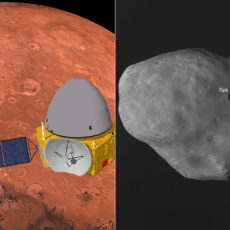
Gale Crater stretches across Mars like a cosmic mural, and NASA’s Curiosity rover just dropped a stunner. On May 9, 2025, perched on Mount Sharp, the rover snapped a panoramic shot that’s less a photo and more a window into an alien realm. This isn’t just a pile of rocks—it’s a glimpse into Mars’ ancient saga, a world that once cradled water and, perhaps, whispers of life.
30 seconds on Mars. Enjoy this recent look, courtesy of @MarsCuriosity, at the view from the slopes of Mt. Sharp, with the distant rim of Gale Crater on the horizon. You can imagine the quiet, thin wind, or maybe even the waves of a long-gone lake lapping an ancient shore. pic.twitter.com/XEj3ZKgqc7
— NASA Mars (@NASAMars) May 20, 2025
The latest panorama, grabbed by Curiosity’s Mastcam, lays bare Gale Crater’s raw, rugged charm. More specifically, a sprawling 96-mile-wide basin, gouged out by an asteroid smash billions of years back. From its spot on Mount Sharp—aka Aeolis Mons—the rover scores a killer view of a landscape that’s both otherworldly and oddly familiar. Up close, jagged rocks and dusty slopes tumble down, while the crater’s rim looms far off, posing as a mountain range, shaped by endless wind and time.
- Feed a passion for science and technology – Kids can learn more about the challenges of space exploration with this LEGO Technic NASA Mars Rover...
- Conduct a test flight – This advanced building kit for kids ages 10 and up includes a buildable toy version of NASA’s Ingenuity helicopter, which...
- AR brings the mission to life – The accompanying augmented reality app experience lets kids dive into the details of the rover and its mission

Mount Sharp, jutting 3.4 miles skyward from the crater floor, is like a geological vault, packed with clues about Mars’ shift from wet oasis to icy wasteland. Scientists at NASA’s Jet Propulsion Laboratory (JPL) point out that the mountain’s lower slopes, where Curiosity roams, are rich with salty minerals—remnants of ancient streams and ponds. “Mount Sharp is full of salty minerals,” Mashable reports, “and scientists believe they were left behind by streams and ponds before all of the water of Mars dried up billions of years ago.” Curiosity’s mission is to climb this mountain, layer by layer, to decode why Mars lost its water and whether it ever harbored microbial life.

In the foreground, the rough, chewed-up terrain bears scars of erosion, hinting at ancient forces at play. Those distant “mountains”? Just the crater’s rim, standing proud against a wispy, haze-thin sky. Mars’ atmosphere, a mere 1% of Earth’s density, lends the scene a spooky sharpness. NASA nails the vibe, saying: “You can imagine the quiet, thin wind, or maybe even the waves of a long-gone lake lapping an ancient shore.” It’s desolate yet brimming with echoes of history.
Curiosity’s Mastcam, its dual-camera “eyes,” weaves together a slew of shots to craft these jaw-dropping, wide-angle vistas. The panorama helps scientists map the terrain, plan the rover’s next moves, and study geological features like the salty deposits that hint at Mars’ wetter past. “By studying the area, scientists hope to discover why the Red Planet turned from being a watery world like Earth to a frozen desert,” NASA explains.
Gale Crater’s vastness feels otherworldly, yet its rocky slopes and distant horizons echo Earth’s deserts. Curiosity, now 13 years into its mission since landing in 2012, is our stand-in, a car-sized explorer sending back postcards from a planet 140 million miles away. NASA’s Doug Ellison, a planning team chief at JPL, puts it in perspective: “Curiosity’s large size allows it to carry an advanced kit of 10 science instruments,” including the Mastcam that captured this panorama.
[Source]










